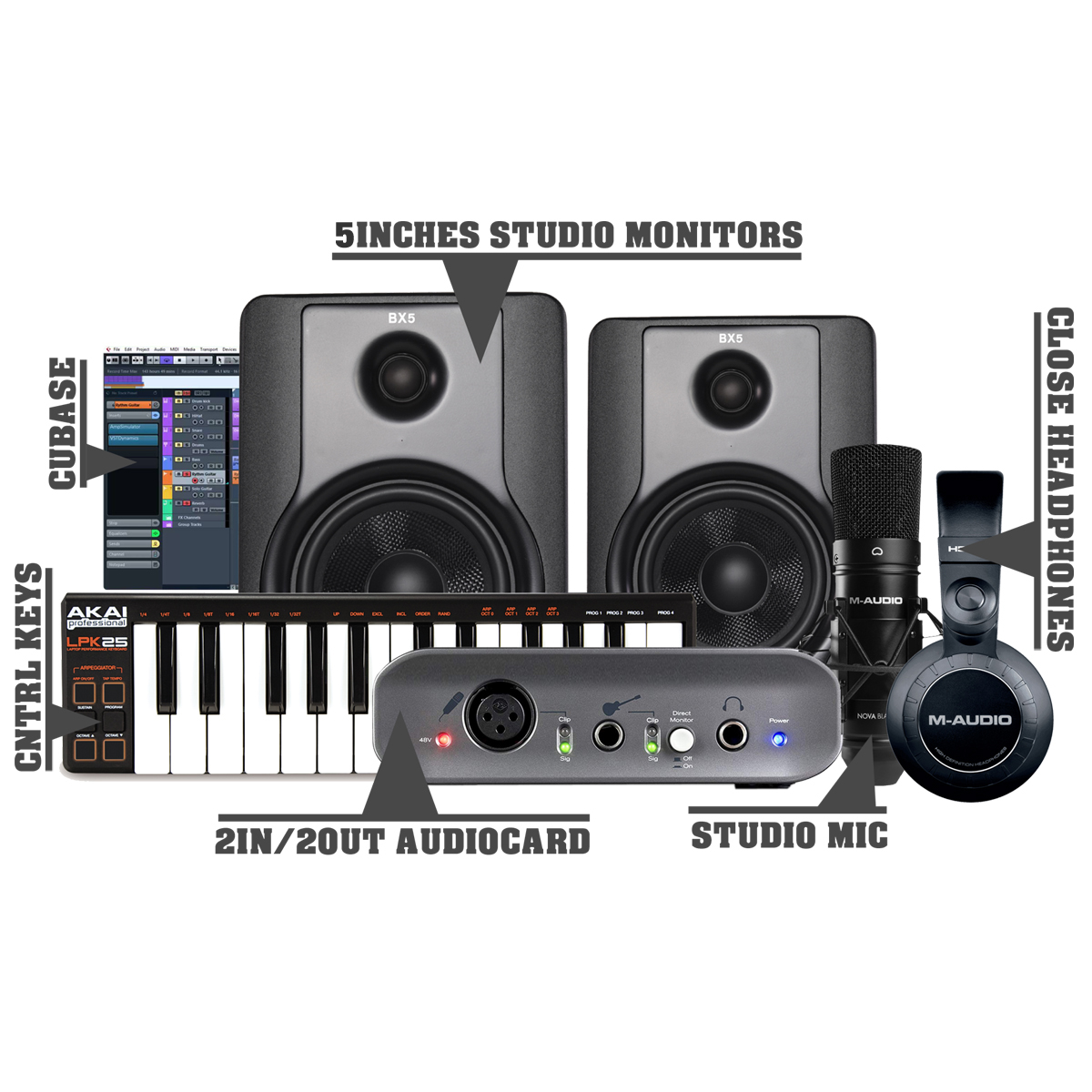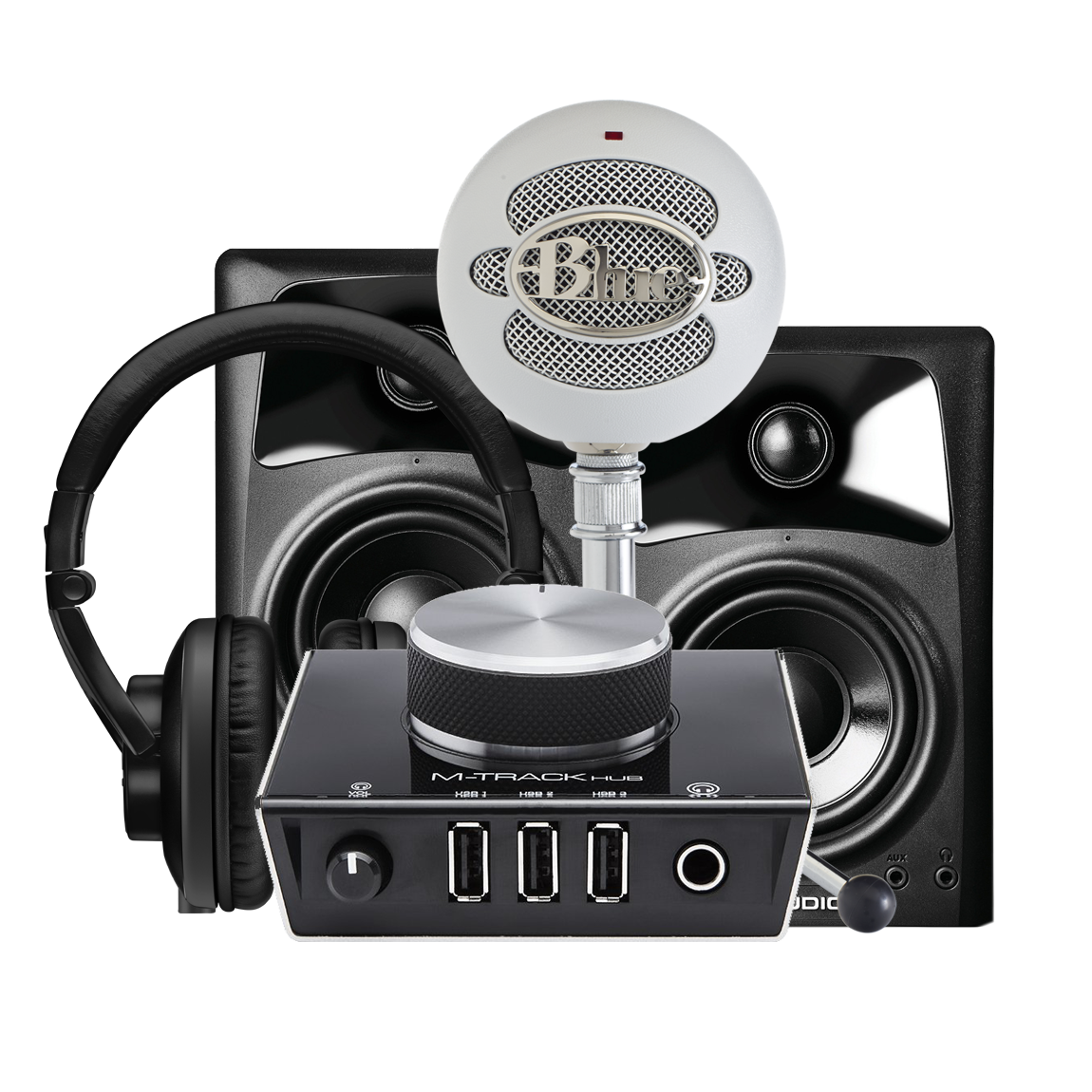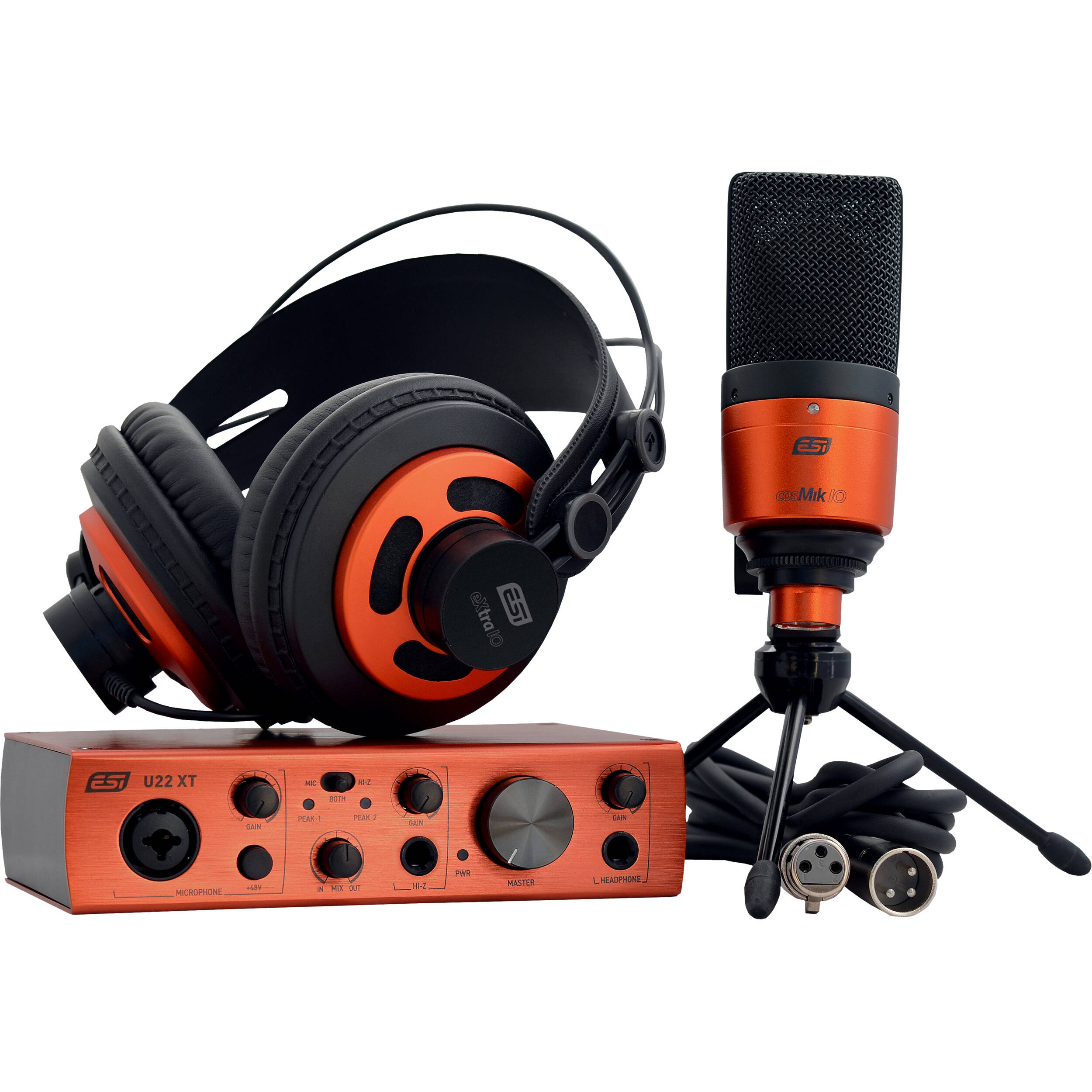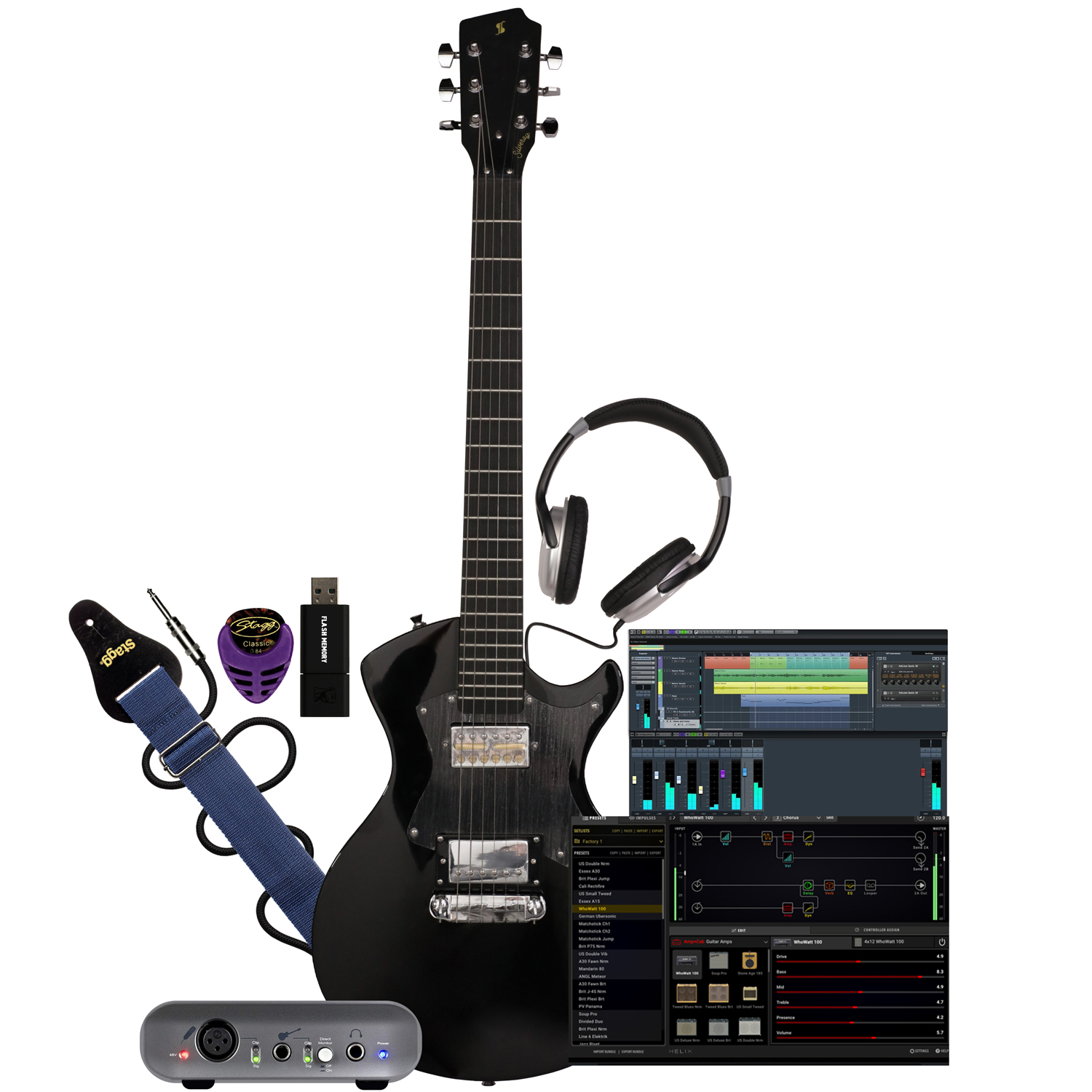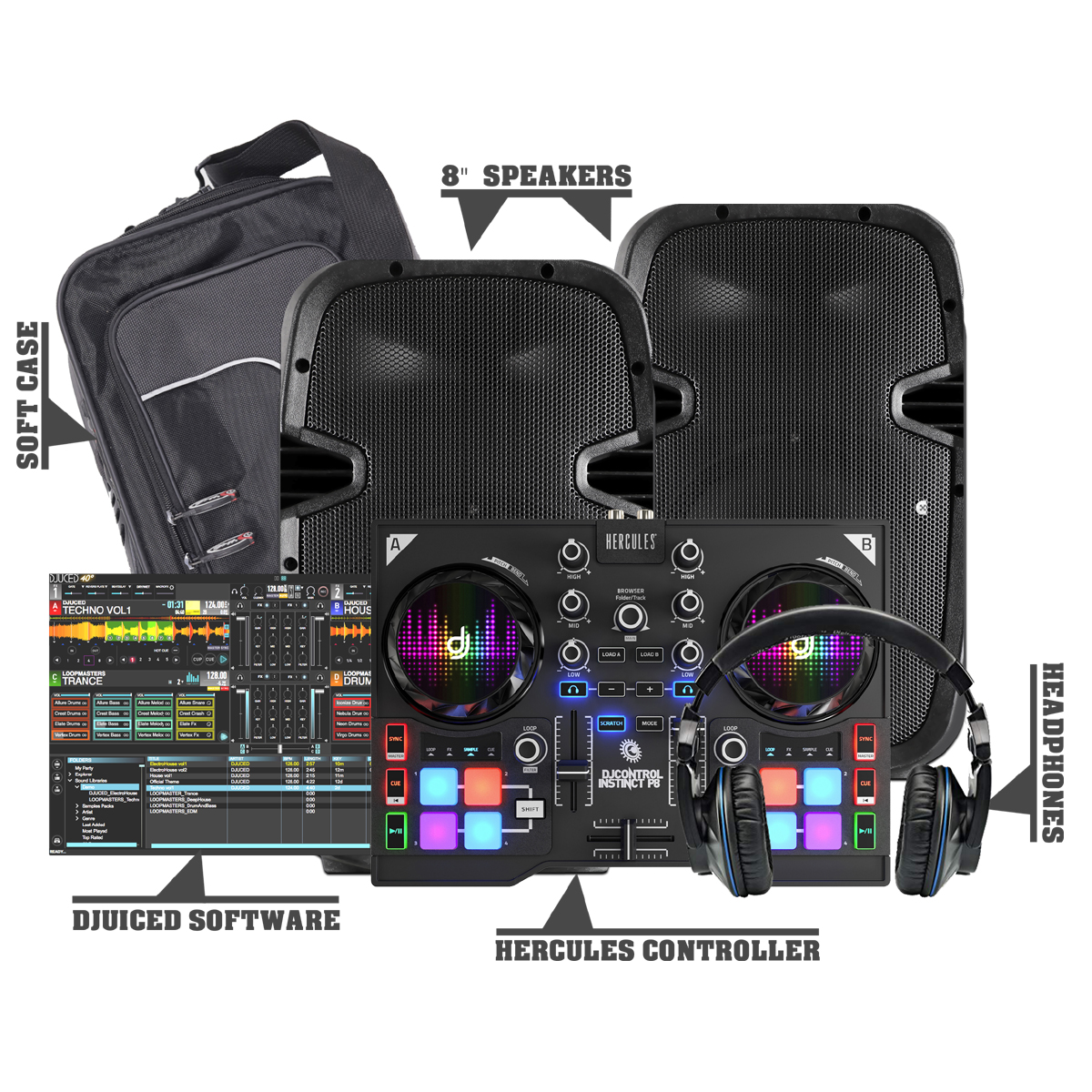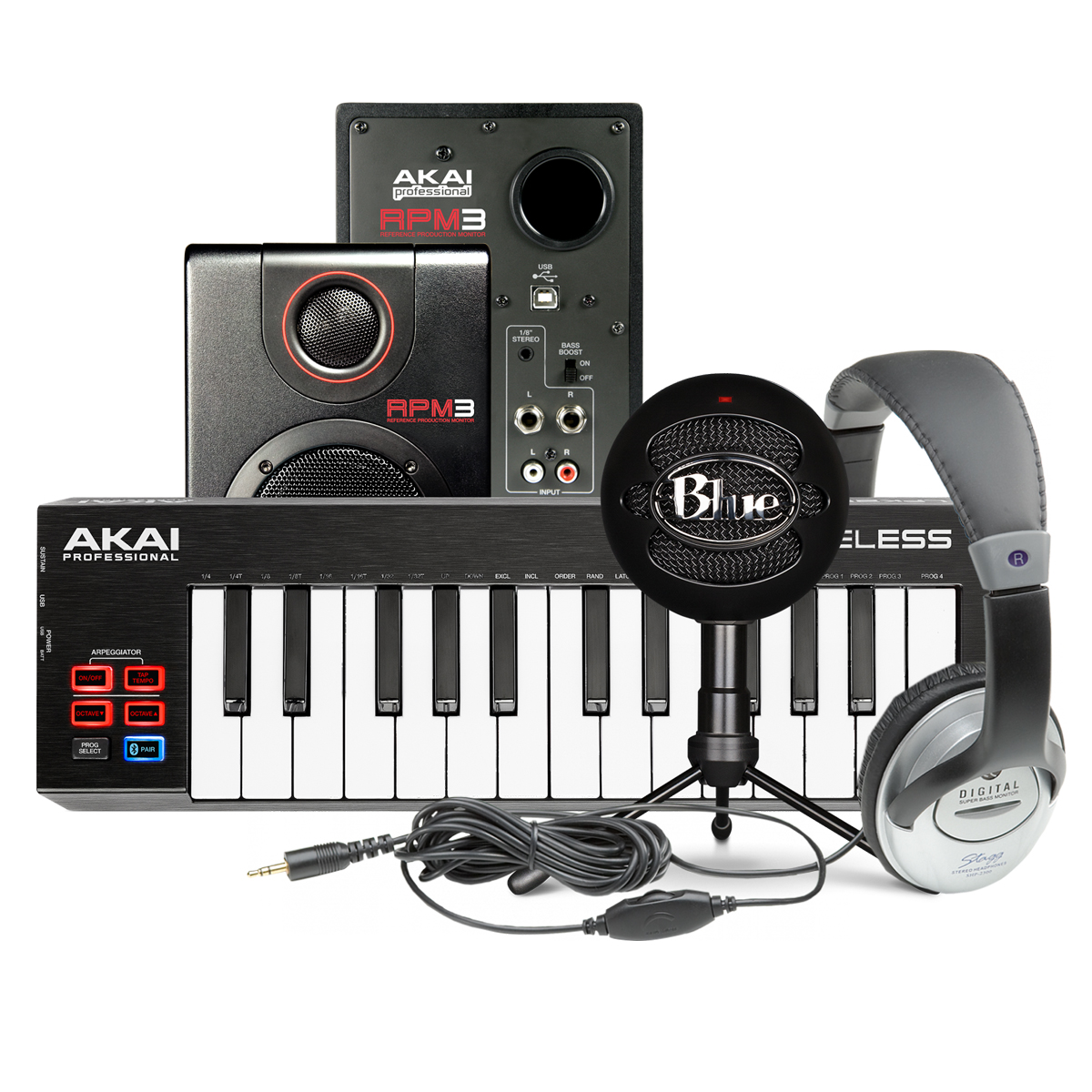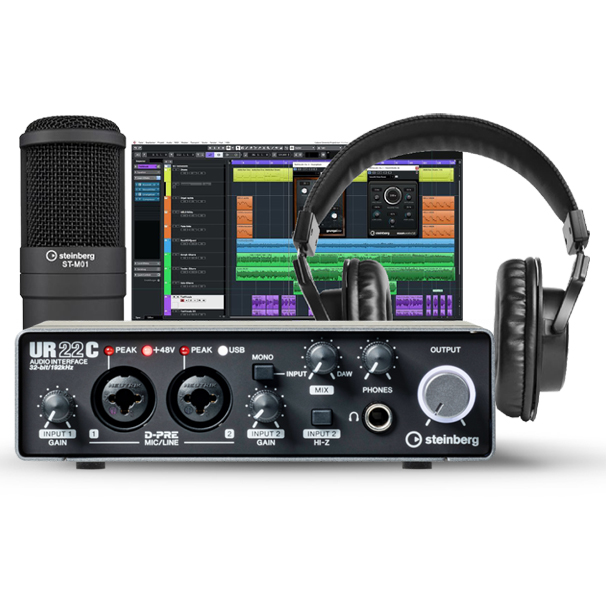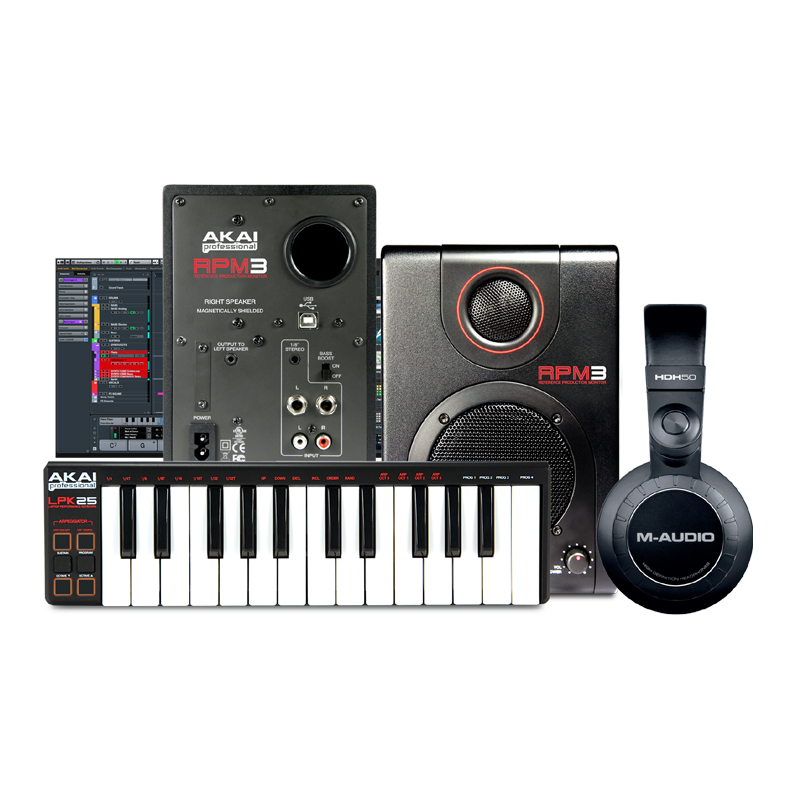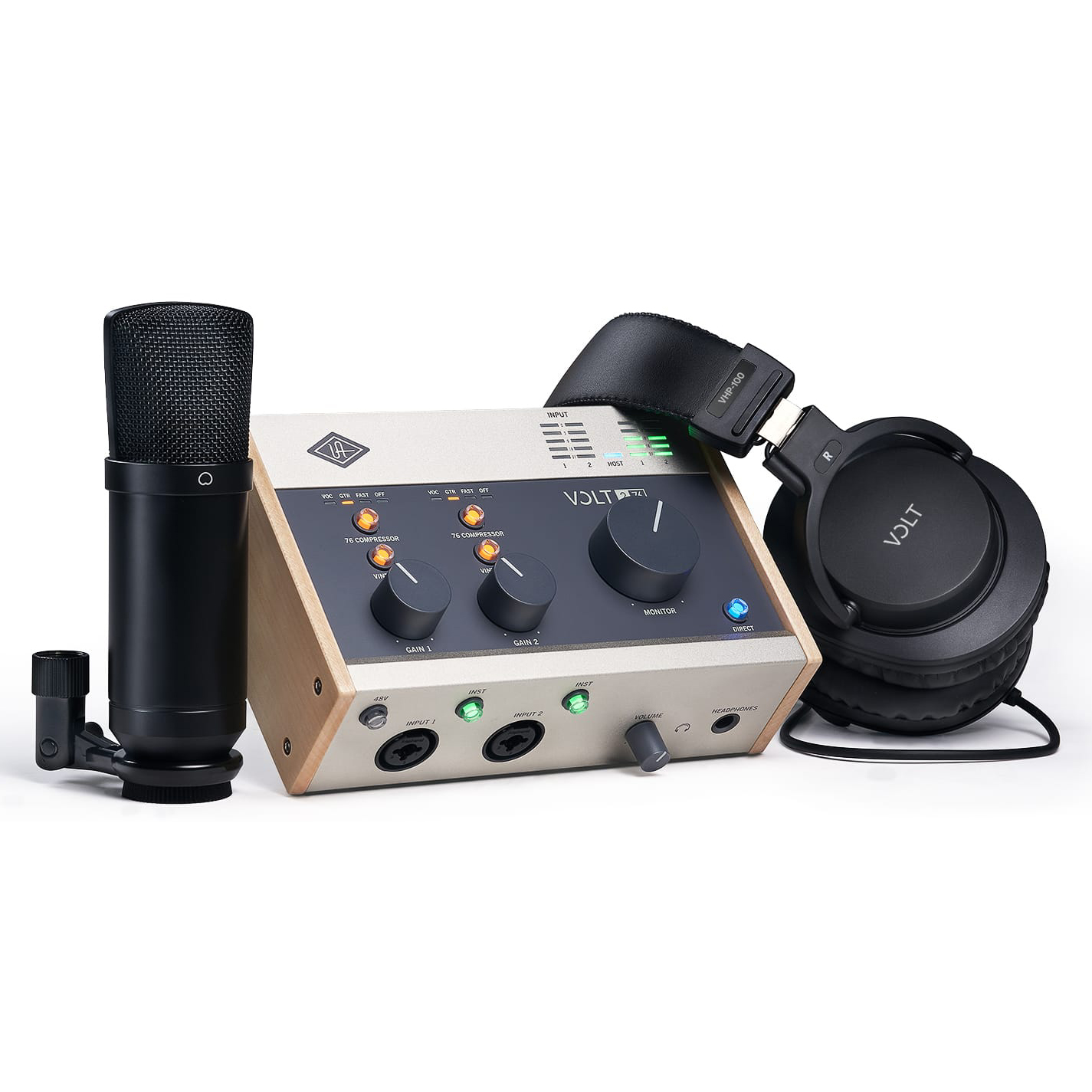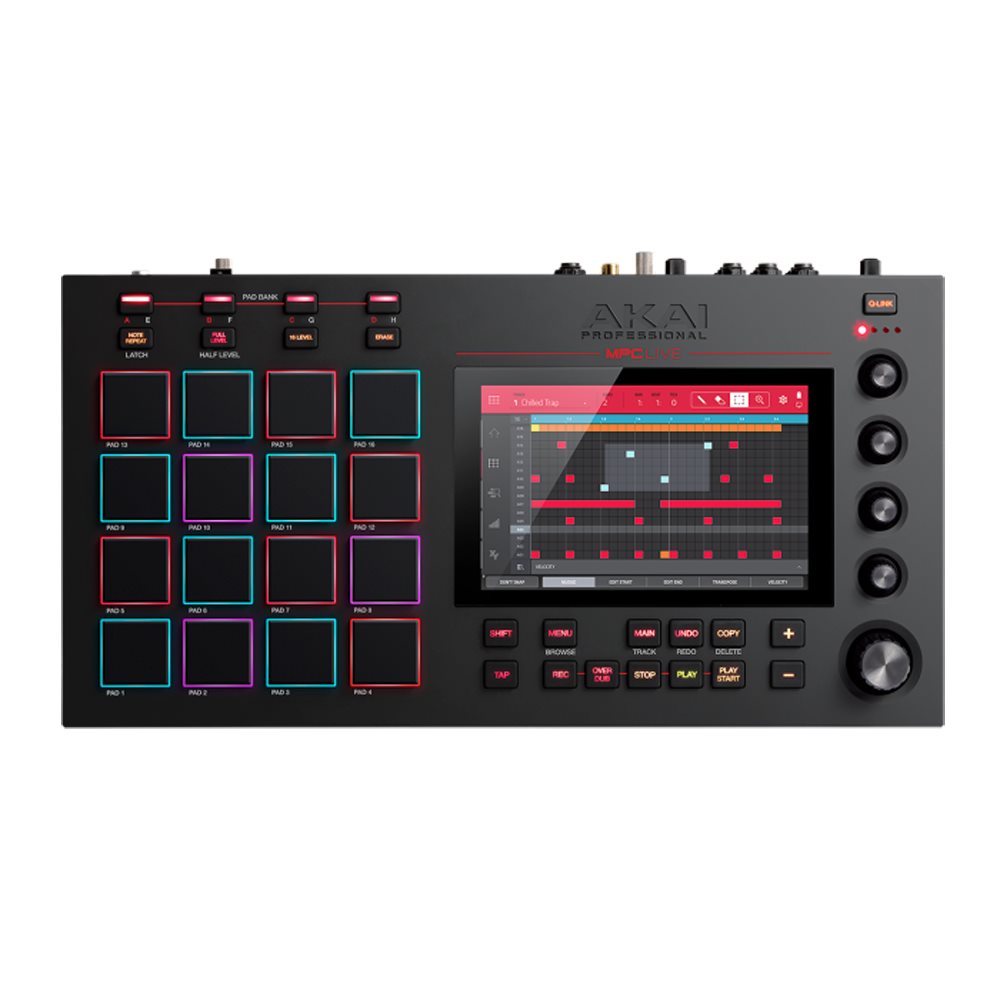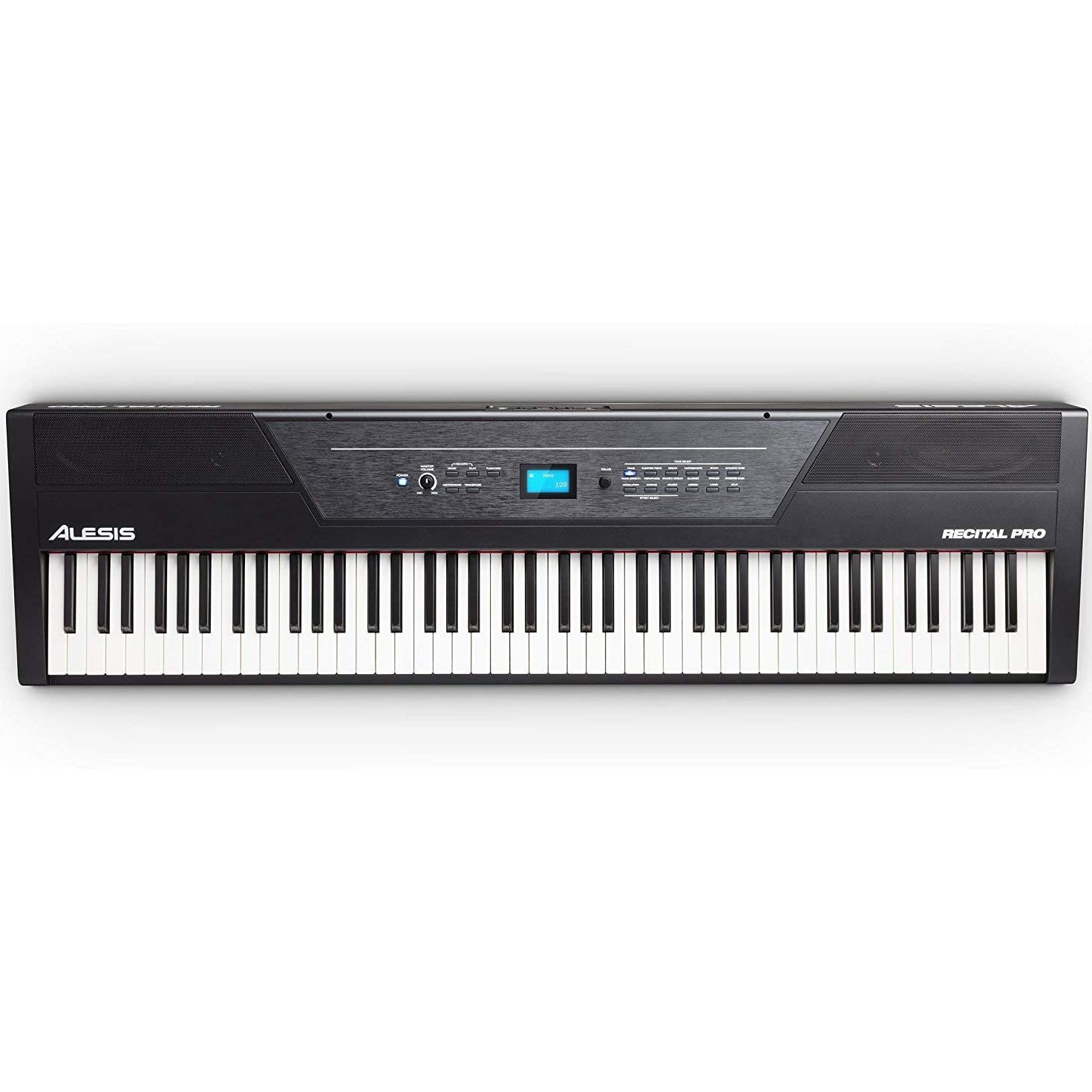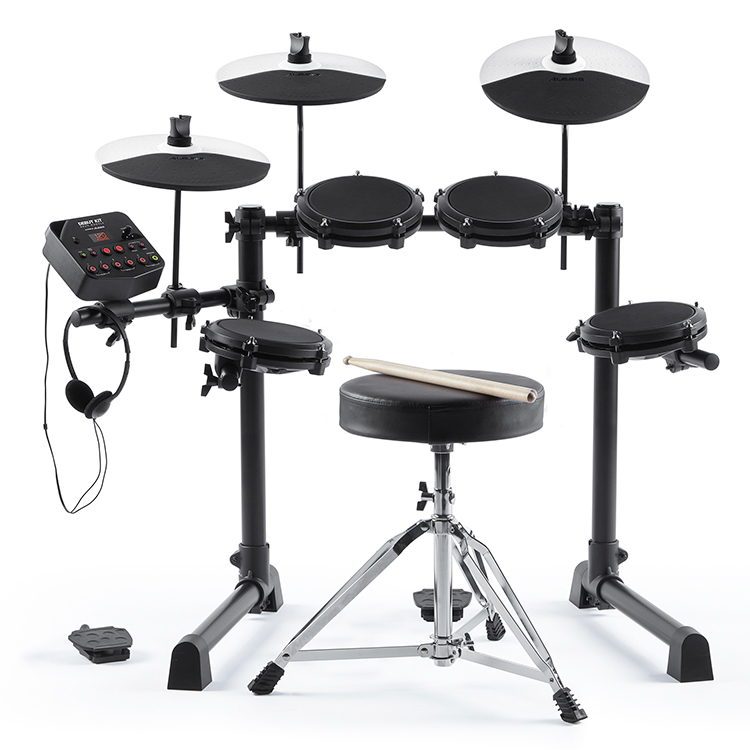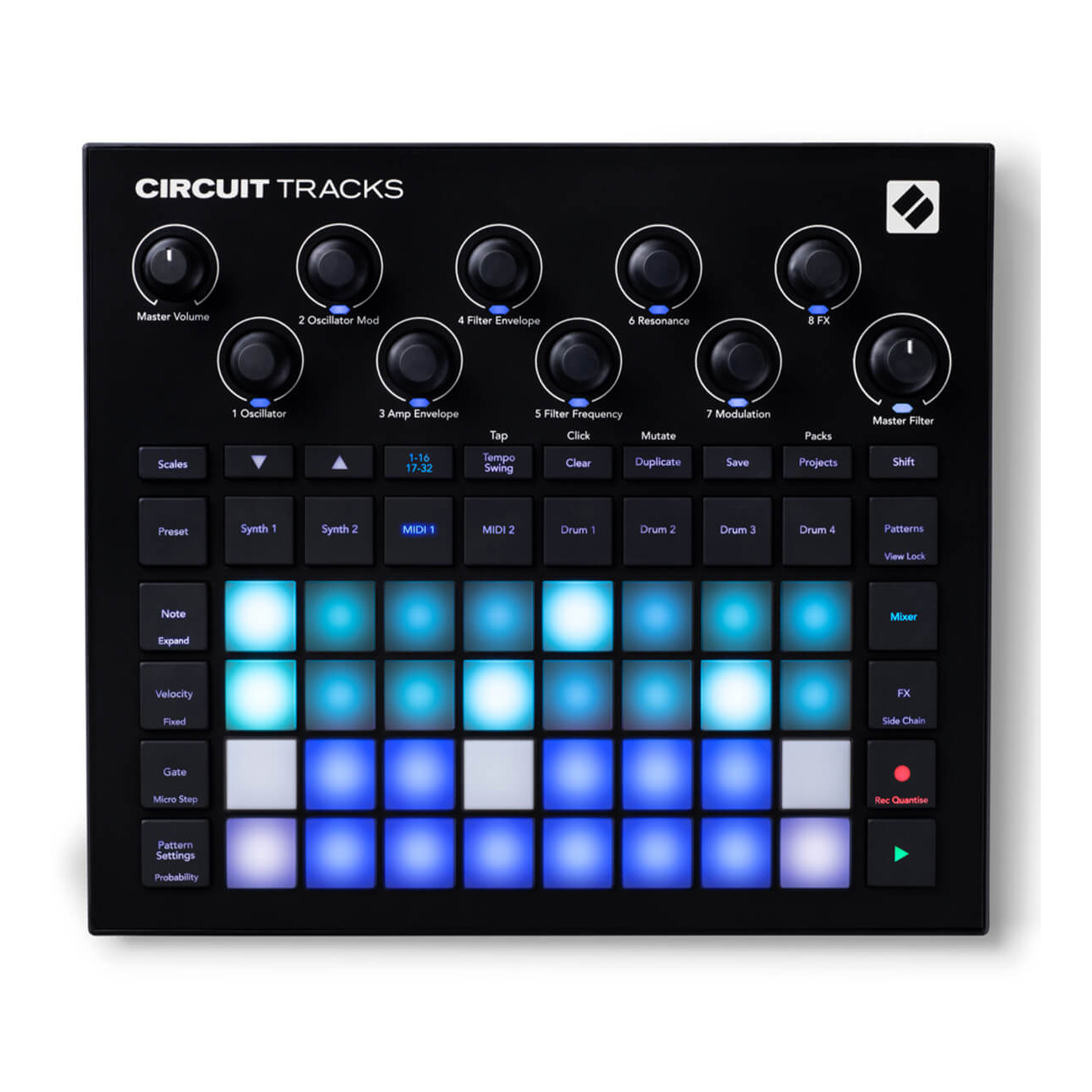Everything You Need as HARDWARE to start recording like the PROS!
If you want to start music production right away, as well as, record with pro-quality sound without spending a fortune, then this is the package for you. A good audio interface is essential to any home studio or laptop recording setup. And the sound quality of this tool cannot go unnoticed. Without a doubt, a very affordable package, regardless of what it is offering.
This offer is ideal for musicians as well singers and even the DJ could use to start making serious remixes.
Here what you get :
1- Audiocard with 1IN/2OUT , High impedence for guitar
2- 8 inches Near field studio monitors
3- Large diaphragm condenser studio microphones
4- Akai LPK25 , 25 keys portable controller keyboard
5- Close type qualtiy headphones
6- Cable from Speaker to the soundcard
7-DAW software
Condenser Microphone – This is a microphone which consists of a thin membrane/diaphragm in close proximity to a solid metal plate. The membrane is made of a material that is conductive, usually Gold or in older condenser microphones it is made from tin foil. As sound waves hit the metal diaphragm, it moves back and forth, the distance between the diaphragm and metal plate obviously changes, hence changing the capacitance… Ultimately this changes the sound waves to electrical signals.
Due to the way in which Condenser Microphones are built, they provide a more detailed capture of an instrument’s natural frequency response. Hence, because of this, they are more popularly used for the studio recording of vocals, guitar and other instruments such as piano, etc.
Audio Interface – An audio interface is a piece of equipment that allows users to plug in instruments (usually analog, although some come with MIDI connectivity) so that they can be recorded in the Digital Audio Workstation (I.E the program you are using to record, this can be such popular tools such as Pro Tools, Logic Pro, Ableton, etc). Audio interfaces come in a range of different size inputs/outputs, with larger I/O interfaces being more suited to live band recordings, and small I/O interfaces being suited to individual instrument recording on a smaller scale.
Although have no doubt, a smaller interface does not necessarily have cheaper electronics, but rather fewer electronics due to the lower number of inputs/outputs.
Headphones – Headphones are used to help monitor your recordings (in real-time) and listen back to entire mixes. Firstly, as a musician is recording a take, he/she will need to know exactly when to come in, the tempo and other Q’s… This provides through the headphones as either a Click-Track or Track of the recording so far, so instruments can be layered on top.
Additionally, once all the recording is complete, you’ll need to mix and master the song, and doing it on headphones is the best way to do this effectively. This is because it provides clarity in comparison to playing the song through speakers… Although make note, before releasing a song, try to test its sound through as many speakers and headphones as possible… After all, not everyone will be listening through studio-quality headphones.
Near field studio monitors- Active nearfield monitors are almost always two-way designs, meaning that they use two drivers — often referred to as a tweeter and a woofer — to produce their sound. The audio going into the speakers (from a mixing desk or audio interface) is essentially split into a high-frequency band and a low-frequency one, with the tweeter taking care of the highs and the woofer handling the lows.
This will helps to treat and fix any frequency and mix and balance all tracks together and get all the work synergitic and sweet sounding.

